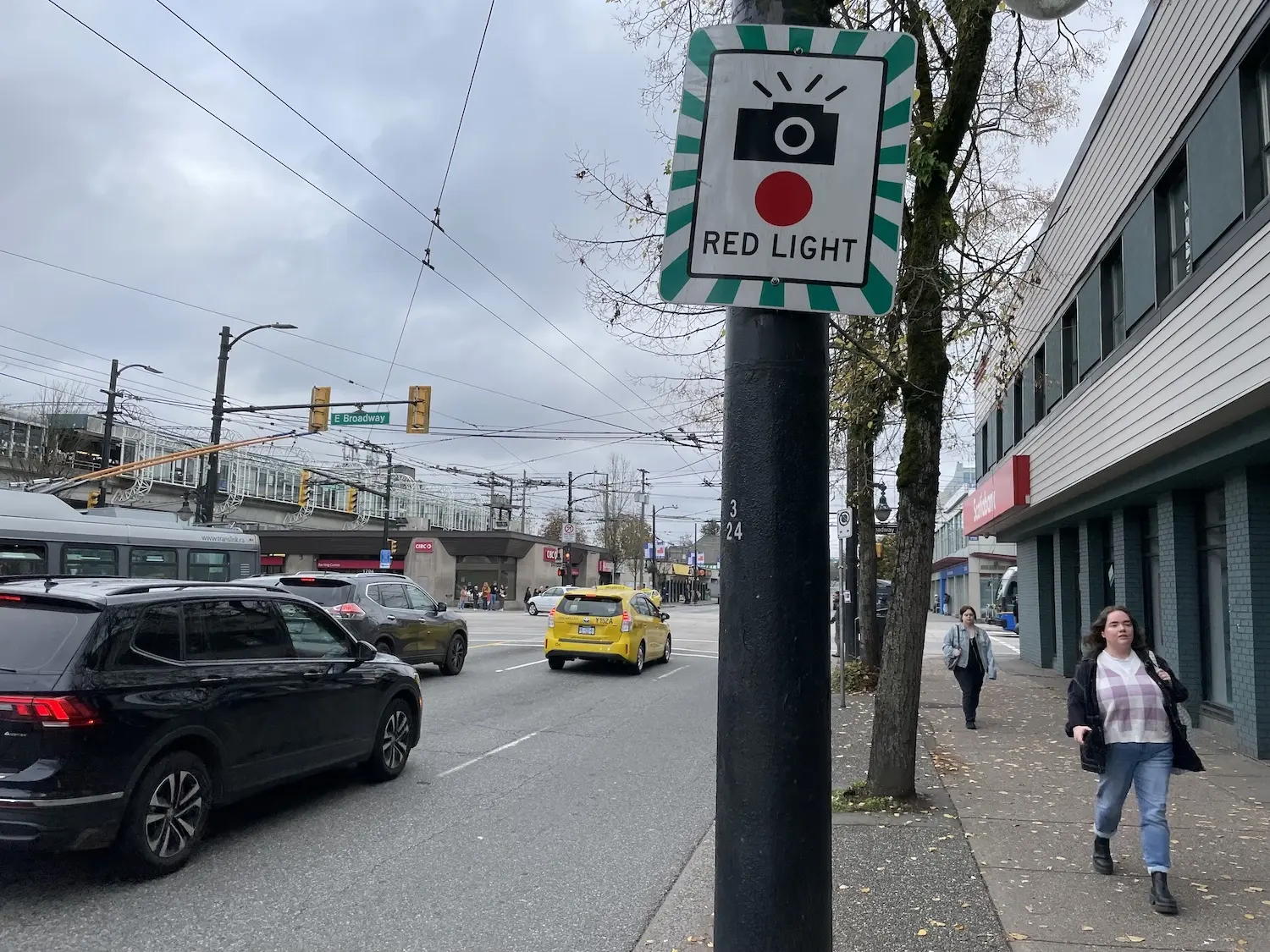- cross-posted to:
- vancouver@lemmy.ca
cross-posted from: https://beehaw.org/post/9099201
Hello Vancouverites, you may have heard about an upcoming motion in Vancouver council that calls for the installation of speed and red light cameras at more of the city’s high-crash intersections. On average there are 22 car crashes resulting in death/injury in the city every day. This is a public safety and public health crisis, and automated enforcement with speed and red light cameras is an effective and efficient way to make roads safer.
The motion will be considered on Wednesday, November 1st. You can help by expressing support either by emailing or speaking to council. Here’s our guide for doing so: https://visionzerovancouver.ca/intersection-safety-cameras/
Thank you for taking action for safer streets. Share the page and encourage other people you know to do the same!

Fuck that, red light cameras do not make intersections safer, they only make camera operators money.
Don’t fall for automatic enforcement scams.
Fuck that, red light cameras do not make intersections safer, they only make camera operators money.
Do we have any data on this? The studies I’ve seen show that it does reduce injuries and improves driver behaviour long term.
https://www.iihs.org/topics/red-light-running#effectiveness-of-cameras

I dunno. My research lab is a small room in my house, so have to lean on the research of so many universities. It’s carefully balanced out - teach both sides of the cash cow, right? - by groups on behalf of impoverished cities and equipment vendors; I just don’t know whom to trust.
https://amp.star-telegram.com/news/state/texas/article216364010.html
https://www.digitaltrends.com/cars/red-light-camera-controversy/
Careful with your own references. There’s a lot out there both for and against the idea, all the research and data seems woefully biased, and it’s only all the victims to blame.
Thank you for the first link. Interesting read. It looks like the article does support the same premises as most others I know:
We estimate a difference-in-differences model using 12 years of geocoded police accident data and find evidence that angle accidents increased and non-angle accidents decreased in Houston after ending the camera program.
The surprising bit is that they found that non-angled accidents had an incidence of injury such that this trade-off simply canceled out in welfare expenditure. A conclusion highly dependant on a particular welfare model, with specific figures for the dollar value of incapacitating or fatal injuries. It’s an interesting data point, but also something that I’d be reluctant to generalize because other cities have observed otherwise - this is probably very confounded with other road design aspects and the particulars of welfare expenditure in Texas.
EDIT: also worth taking note that this study uses a statistical model to control for the likelyhood of an intersection receives the RLC treatment, which is interesting but I’m not sure I agree with how useful that is. It’s an attempt to control for the dangerousness of the intersection, but that will obviously dilute the effectiveness of RLC in a sea of low-danger intersections and I don’t get why would this be helpful for decision making - unless someone is proposing we add RLC to literally all intersections of a city.
And yet, a different study of the same data found that the spillover effect was easily confirmed as statistically significant:
https://pubmed.ncbi.nlm.nih.gov/28882258/
the RLC deactivation analysis indicated that crashes increased by 20 percent for all RLR crash types and by 23 percent in right-angle RLR crashes at the formerly treated intersections. After deactivation, all severity RLR crashes increased more than expected at nearby non-treated intersections, which indicates the possibility of an adverse spillover effect
The digitaltrends link doesn’t bring any data pointing to inefficacy, though. It brings other proposals (which I agree), arguing that we should do more than just add cameras and be watchful of lobbying, which makes a lot of sense but it isn’t really a case against adding them.
Careful with your own references. There’s a lot out there both for and against the idea
Absolutely, which is why I prefer more longitudinal studies and long term meta analysis :-)

redesign the intersections if you want them to be safer. the cameras are just going to sit there and document the ongoing carnage
the cameras are just going to sit there and document
Thankfully it looks like in many cities the observed effect is more than just documentation, it’s a tangible reduction in injuries. But to be honest, if the only thing we got from cameras was documentation, that’s already a good thing? These pay for themselves so at least we’d get more accountability and justice.

imho the latter is not a good tradeoff

